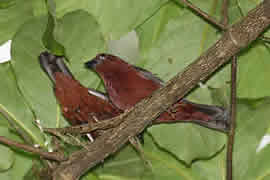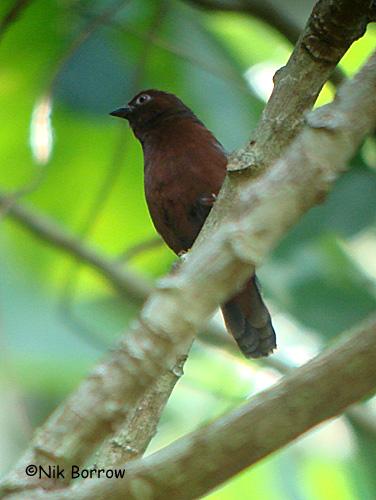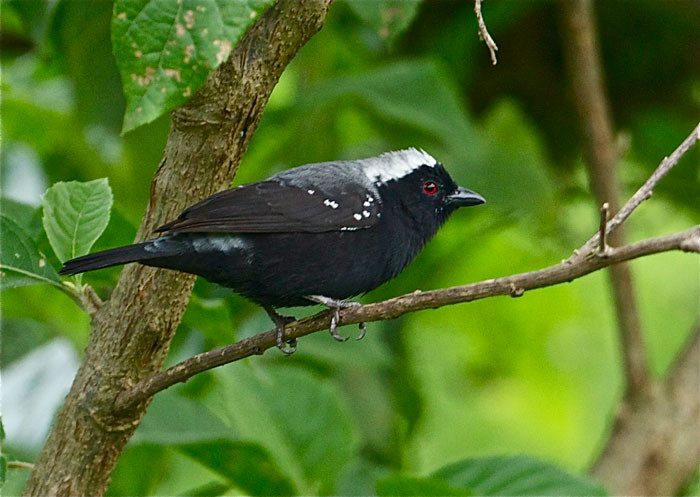
Nigrita fusconota
SUBFAMILY
Estrildinae
TAXONOMY
Nigrita fusconotus Fraser, 1843.
OTHER COMMON NAMES
French: Nigrette а ventre blanc; German: WeiЯbrustmantelschwдrzling;
Spanish: Negrita Pechiblanca.
PHYSICAL CHARACTERISTICS
3.9 in (10 cm). Sexes similar with females sometimes having
slightly paler underparts with less gray. Juveniles are duller
than adults and have a dark brown rump and tail compared to
the adults’ blue-black rump and tail.
DISTRIBUTION
Guinea and Sierra Leone, east to western Kenya, and south to
northern Angola.
HABITAT
Occurs in secondary growth, cleared areas, forest edges, and
gallery forest.
BEHAVIOR
Found singly, in pairs, or in small groups. The song is described
as a descending, trilling “tz-tz-tz-tz-tzeeee” sometimes
ending with a few “tsip” or “chip” notes. Males sing from April
to October both from a high perch in a tree and while feeding.
FEEDING ECOLOGY AND DIET
Feeds at varying heights of shrubs and trees; rarely seen on
the ground. Unlike most estrildids, negro-finches forage by
searching leaves in a warbler-like fashion. Their diet consists
of small insects, caterpillars, berries and other small fruits,
the oily cases of oil palm nuts, and small seeds. The bill,
which is more slender than most estrildids, is probably an
adaptation for this species’ increased insectivorous portion of
the diet.
REPRODUCTIVE BIOLOGY
The mouth patterns of nestlings and the nest, a sphere with a
side entrance, are some of the only features that associate this
species with the family Estrildidae. Nesting material includes
bark strips, leaf fibers, dry grass, and moss. A clutch is typically
three to six white eggs.
CONSERVATION STATUS
CITES: Appendix III. Not considered threatened by the IUCN.
SIGNIFICANCE TO HUMANS
Likely due to the lack of bright coloration and to the more insectivorous
diet, this species has failed to become popular in
the pet trade.
Photo Gallery of - White-breasted negro-finch




 Animalia Life
Animalia Life